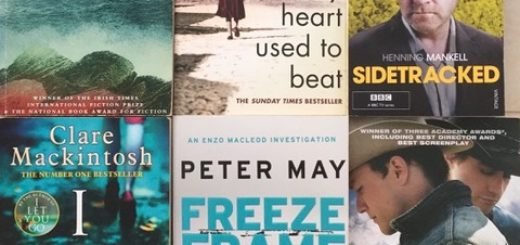Top 10 Plot Problems of 2013 by Kay Keppler
 Let’s welcome back Kay Keppler for another month with Writer’s Fun Zone! In today’s article, Kay discusses top ten plot problems. Enjoy!
Let’s welcome back Kay Keppler for another month with Writer’s Fun Zone! In today’s article, Kay discusses top ten plot problems. Enjoy!
***
The end of the year for many people is a time of looking back and reflecting, a time to sum things up and decide where we’ve been and where we want to go. I wondered, how does this period of reflection tie into the craft of writing? We’ve been looking at the issues that challenge writers. We’ve been trying to improve. How do we assess our progress, understand what we we’ve learned, and fix bad habits? How can we apply new understanding to our writing as we move forward?
Meet Alicia Rasley
Then Alicia Rasley, (http://www.aliciarasley.com/) teacher and writer extraordinaire, came to mind. She has a great web site full of extremely helpful articles on all areas of writing; if you haven’t checked her out yet, do so! You won’t be sorry.
One of the many great articles she’s posted is a list of what she considers to be the top 10 plotting problems (http://www.aliciarasley.com/10prob.htm) that writers face. It’s a great thumbnail of common challenges. She offers astute explanations of how writers go off the rails and what you should ask yourself to get back on track. I’ve listed her 10 problems below (with my note on the topic in parentheses). You’ll want to read her explanations on the site (some of these plotting problems have their own separate article), because she’s really got this stuff cold.
And now, Alicia Rasley’s Top 10 Plotting Problems. Drum roll, please!
10. Backstory Blunders (don’t tell too much history in one chunk or too soon)
9. Boring Beginnings (don’t set the stage for too many pages before the story begins)
8. Limping to a Conclusion (end your book with a bang, reinforce themes)
7. Sagging Middle (increase tension, raise the stakes)
6. Tumors and Parasites — The cast of thousands (don’t have so many secondary characters and subplots that they deflect from the main plot)
5. Plodding Pacing (make every scene count)
4. What a Coincidence! (give characters agency)
3. Conflicts about Conflict (avoid serial or incoherent conflict)
2. Structural Weaknesses (understand your story questions)
1. Whose Story Is This, Anyway? The Plight of the Protagonist (keep the protagonist active and motivated)
If you don’t have any of these issues, congratulations! You win the gold cup, and my best wishes for your writing success. For the rest of us, though — how many of these issues do you still see in your writing? What have you learned, and what are you doing, to correct them? And — probably most important — how can you tame these problems in 2014?
I’ll be thinking about these things over the holidays myself. Have a great season, and I’ll see you back here – or at the grindstone – in January.
***
 Kay Keppler (www.kaykeppler.com) is an author (Zero Gravity Outcasts, Betting on Hope, Gargoyle: Three Enchanting Romance Novellas) and editor of fiction and nonfiction (Angel’s Kiss, Outsource It!) who lives in northern California. Contact her here or at kaykeppler@yahoo.com to ask questions, suggest topics, or if you prefer, complain.
Kay Keppler (www.kaykeppler.com) is an author (Zero Gravity Outcasts, Betting on Hope, Gargoyle: Three Enchanting Romance Novellas) and editor of fiction and nonfiction (Angel’s Kiss, Outsource It!) who lives in northern California. Contact her here or at kaykeppler@yahoo.com to ask questions, suggest topics, or if you prefer, complain.






